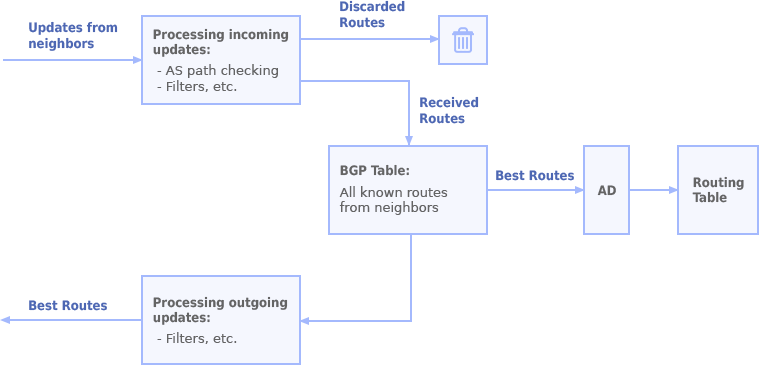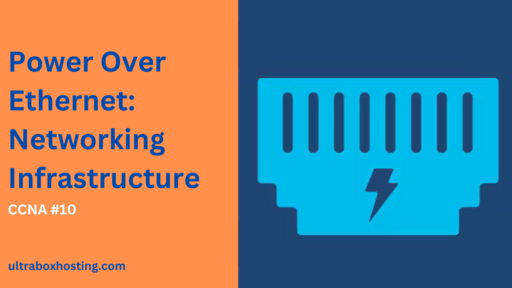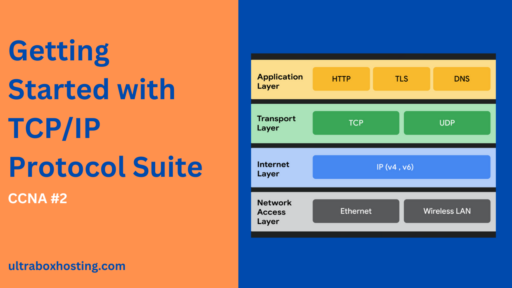The Border Gateway Protocol (BGP) is the protocol underlying the global routing system of the internet. It is classified as a Path Vector protocol and is used for routing data between autonomous systems (ASs)—large networks or groups of networks that operate under a single administrative domain. BGP is crucial for the Internet’s operational architecture, making an in-depth understanding of its mechanics, uses, and challenges essential for network engineers and administrators.
What is BGP?

BGP is the standardized exterior gateway protocol designed to exchange routing and reachability information among autonomous systems on the Internet. The protocol is defined by the Internet Engineering Task Force (IETF) in RFC 4271. BGP makes routing decisions based on paths, network policies, or rule-sets configured by a network administrator and is involved in making core routing decisions.
How BGP Works
BGP’s primary function is to exchange routing information between BGP systems. Here’s a detailed breakdown of each step in the BGP operational process:
- Establishment of Peering Sessions:
- TCP Connections: BGP uses TCP as its transport layer protocol, specifically port 179, to establish a reliable connection between peers. This ensures that BGP messages are delivered reliably and in the correct sequence.
- Session Configuration: To form a BGP peering session, both routers must be manually configured with each other’s IP addresses. Peering is typically established between routers that are directly reachable, either within the same AS (iBGP) or across different ASs (eBGP).
- Authentication: Often, BGP configurations include authentication steps to ensure that connections are established securely, preventing unauthorized BGP updates.
- Exchange of Routing Information:
- Initial Exchange: Once a BGP session is established, the routers exchange their entire BGP routing tables. This exchange includes all the BGP routes that each router knows, ensuring that each has a comprehensive view of the network topology as known by the other.
- Incremental Updates: After the initial table exchange, routers only send updates when routes change. This efficiency reduces bandwidth usage and processing power on each router.
- Path Selection:
- Route Attributes: BGP uses various attributes such as AS_PATH, NEXT_HOP, and LOCAL_PREF to determine the best path. Unlike IGPs, BGP does not use metrics like hop count, focusing instead on policy-based routing decisions.
- Decision Process: The BGP decision process is complex, involving multiple steps to choose the most preferable route based on the complete set of attributes received with each route.
Core Concepts in BGP
Understanding BGP fully requires familiarity with its fundamental concepts:
- Autonomous Systems and AS Numbers:
- Definition: An autonomous system (AS) is a distinct network or group of networks under a common administration that shares a common routing policy.
- AS Numbers (ASN): ASNs are unique identifiers allocated to each AS for use in BGP routing. Regional Internet Registries (RIRs) assign ASNs to ensure global uniqueness.
- BGP Peers and Sessions:
- iBGP vs. eBGP:
- iBGP (Internal BGP): Conducts routing within an AS. iBGP routers must be fully meshed theoretically to ensure route visibility within the AS.
- eBGP (External BGP): Manages routing between different ASs. It requires direct or indirect (via another AS) connectivity to the other BGP router.
- Session Stability: Maintaining session stability is crucial, often necessitating the configuration of keepalive and hold-down timers to manage the session’s liveliness.
- iBGP vs. eBGP:
- Routing Policies and BGP Attributes:
- AS_PATH: Lists ASs that routing information has passed through. It is crucial for loop prevention.
- NEXT_HOP: Specifies the next hop IP address to reach the destination network.
- LOCAL_PREF: Indicates the preference of a route within an AS; higher values are more preferred.
- COMMUNITY: A tag that can be applied to routes to apply specific routing policies or decisions.
BGP Route Selection Process
BGP’s route selection process is detailed and structured to ensure that the most reliable and efficient path is chosen:
- Prefer the highest LOCAL_PREF: Routes with a higher local preference are preferred over those with a lower preference.
- Select the path with the shortest AS_PATH: Fewer AS hops are generally preferred as they tend to indicate shorter routes.
- Choose routes with the lowest ORIGIN Type: Preference is given to routes that have originated from an IGP over those entered into BGP via redistribution or other means.
- Prefer the path with the lowest MED: The MED attribute is used to differentiate between multiple entry points into an AS.
- Prefer eBGP over iBGP paths: Routes learned via eBGP are considered more desirable than those learned via iBGP.
- Use the shortest IGP path to the BGP next hop: If multiple paths require a tie-break, the path with the shortest IGP metric to the next BGP hop is preferred.
- Select the oldest path for eBGP: For stability, older paths are preferred because they have been in the table longer.
- Consider the router ID: As a last resort, paths from the BGP router with the lowest router ID are preferred.
BGP and Network Security
While BGP is incredibly effective, it also presents security challenges. Incorrect routing information can lead to traffic blackholing, interception, or denial of service. Efforts like BGPsec and RPKI (Resource Public Key Infrastructure) are aimed at enhancing BGP security through cryptographic methods.
BGP in Modern Networks
In today’s complex network environments, BGP is not just a protocol for Internet routing. It is also used in large-scale enterprise networks to provide a robust, scalable approach for managing data flows across multiple data centers and hybrid cloud environments.
Conclusion
BGP is more than just a routing protocol; it is a critical component of the Internet’s backbone, influencing global data flows and connectivity. Understanding BGP in depth provides network professionals with the knowledge to optimize, secure, and manage network infrastructures effectively. Whether for managing a multi-homed ISP connection or ensuring the stability and security of enterprise network traffic across various global sites, BGP’s role is indispensable in modern networking.




